DO-IT News November 2012

Volume 20, Number 3
Below are the articles of the DO-IT News November 2012 newsletter. These articles can also be seen all on one page at the Full Newsletter option.
Director's Digressions
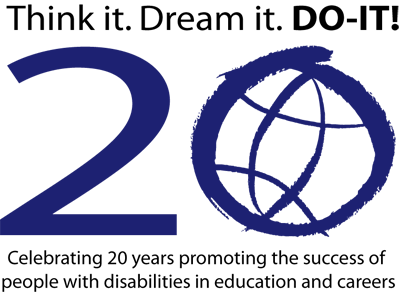
Sixty DO-IT Scholars and Ambassadors recently participated in activities of the annual DO-IT Scholars Summer Study program in July. Throughout Summer Study this year, these participants, who are high school and college students with disabilities across Washington State, their advocates, and DO-IT staff celebrated DO-IT's 20th anniversary. This program has helped launch the careers of hundreds of students with a wide range of disabilities.
In addition to running the summer program, the DO-IT Center offers other activities for high school and college students with disabilities; gives presentations for faculty to learn how to teach students who have disabilities; helps webmasters and technology companies make their products more accessible to individuals with disabilities; and otherwise promotes the full inclusion of individuals with disabilities in education, employment, and community involvement. "I think we're making a dent in making the world a little more accessible," said DO-IT Director and Founder Sheryl Burgstahler, an affiliate professor in the UW's College of Education.
Check out the latest version of DO-IT Snapshots to read the bios of DO-IT Scholars (participants who are still in high school) and DO-IT Ambassadors (participants in college and careers) at DO-IT Snapshots. And, consider celebrating DO-IT's 20th anniversary by contributing to the program.
Goodbye, Matthew
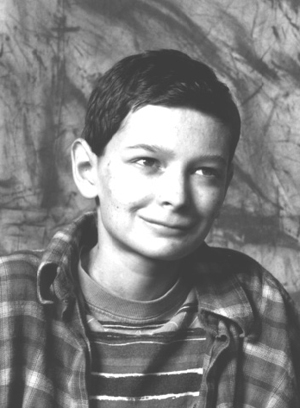
Matthew Porter, '95 Scholar and DO-IT Ambassador, passed away this spring. When Matthew first joined DO-IT he said his passion was computers; this remained true in all of his academic, employment, and recreational activities. After graduating from high school, Matthew went on to pursue an education in IT at the University of Washington (UW). He also worked in the UW's Adaptive Technology Lab, helping other students with disabilities access technology.
Matthew valued his participation in DO-IT After his death his father shared with DO-IT Director Sheryl Burgstahler, "your program opened the door and showed him that he could attend college...he was always proud of having attended the UW. Thanks again."
Matthew was awarded the Seattle Youth Hall of Fame in 1996 and the Pemco Scholarship. Matthew will be forever missed by his DO-IT family.
Summer Study: What Do Phase I Scholars Do?
The DO-IT Phase I Scholars participate in a two-week, live-in Summer Study session on the UW Seattle campus. They learn about college life; explore the Internet; interact with peers, staff, and mentors; and have fun. DO-IT Scholars program started in 1993 as an experimental project for teens with disabilities nationwide. It is currently open to Washington State teens and is supported by the State of Washington, the Boeing Company, the Microsoft Corporation, and the National Oceanic and Atmospheric Administration.
Accessibility In Review
There are many different ways that programs and buildings can be accessible to people. At Summer Study, we learned how people with disabilities are affected when a place is not accessible to its visitors or a program is not accessible to its participants. We evaluated the accessibility of several buildings and programs.
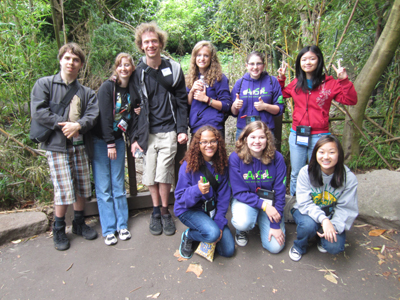
To start, we evaluated the University of Washington, Seattle campus. Although it has ramps and elevators, it also has large hills. Some ramps are placed in very inconvenient places that take a very long time to get up and down. By the time a person in a wheelchair finally gets up the ramp they may already be separated from the group that was able to walk up the stairs.
The second problem we found was at the planetarium. Visitors who were deaf or blind were at a great loss without interpreters or audio description. People who are deaf could either look at the interpreter to understand what was being said or they could look at the screen and miss the explanation. Those who are blind could only hear what was going on because there was no description for them on what the images looked like.
We also evaluated the Pacific Science Center, Microsoft, Woodland Zoo, and University Village. There were many accessibility barriers for multiple disability types. For people using wheelchairs, there were no ramps at the Science Center's sea urchin tank so these visitors were unable to touch them. Also, some stores at University Village were difficult for people in wheelchairs to navigate. At the zoo, walkways were hilly; we believe it would be simple to level the walkways to increase accessibility. For people with hearing impairments, captioning was not provided for videos at the Science Center. And during a Michael Jackson laser show at the Science Center, it was impossible for people who are deaf to know the songs being played. We did not find audio description for the blind provided for videos at any of the places we visited.
It would be straightforward to add some of the accommodations noted above, such as more ramps and closed captioning. These improvements would increase access to all people, including those with disabilities.
Outdoors for All
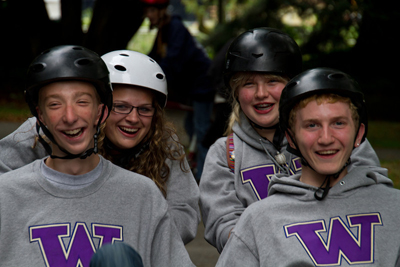
Summer Study participants are introduced to lots of different types of technology. One night we learned about many different types of accessible bikes. One bike was operated using hand steering, where you pedal with your hands instead of your feet. Another bike was a two-person tricycle with a backrest that was operated by your feet instead of your arms.
Jennifer used the hand-driven bike because she has cerebral palsy and cannot use her legs to pedal a standard bike. It took some getting used to the hand driven bike, but in time it became very easy to ride. This was her first time riding a bike and it was a wonderful experience.
Allison rode the tricycle. She liked that the bike had a backrest—the tricycle that she owns does not and she found the backrest much more comfortable. The tricycle was also adjustable in almost every way. The seats could shift forward or backward and the handles could move up or down. All around, it was just nice to be able to bike comfortably and safely next to her able-bodied personal care assistant, Taylor.
We were very pleased and impressed by the number of accessible bikes that were available.
IMAX Accessibility
Our experience at the IMAX Theater was great and interesting! We saw Mummies: Secrets of the Pharaohs. We were seated early, which was great for the people in wheelchairs. Also, Scholars who are deaf received the movie script ahead of time, which was helpful because we knew what the movie was going to be about. However, the theater was so dark that the script was unreadable during movie. Captions would have been helpful, whether it be captioning glasses or open captioning on the screen.
The visual aspects of the IMAX movie were awesome! Because of the great visuals, Scholars who are hearing impaired were able to understand what was going on by the actions of the characters in the movie. The sound was also awesome because we could feel the vibrations. This made the movie fun! The movie engaged our curiosity but it was too short, we wanted to know more about the subject. We were glad to have this experience so a big thank you to DO-IT and everyone involved in making the IMAX movie happen.
Pacific Science Center
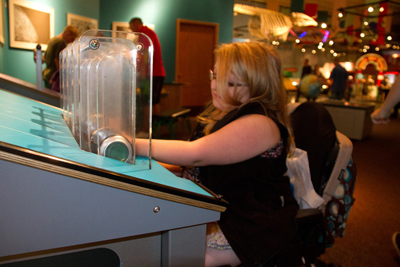
On Saturday morning, the DO-IT crew went to the Pacific Science Center. We started our visit with the dinosaur exhibit, which was very accessible. We moved towards the butterfly exhibit, also very accessible. Unlike the dinosaur exhibit, this exhibit was very warm. We ate turkey sandwiches for lunch while protecting ourselves from curious birds. We watched an IMAX movie that did not have captions. After exploring the fantastic Science Center some more, we watched a laser show featuring Michael Jackson. It was an excellent laser show, although we wish that the lyrics of the songs were laser-lit. This day was definitely an excellent, inspirational experience.
A Trip to Microsoft
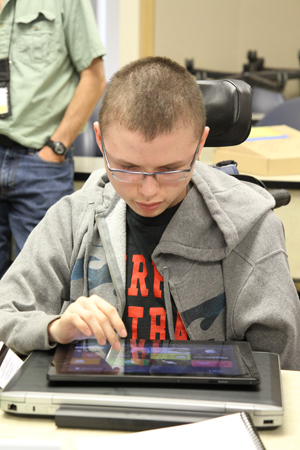
The trip to Microsoft was an exciting hands-on experience. We had the opportunity to work in the role of a product manager and plan out a new playful pet. Learning about the ways that Microsoft accommodates people with disabilities was one of the most important things to us. We appreciated that anyone, even a person with a disability, could have a hands-on experience with something special that would be shipped off to the customer.
Some of the new technology we saw at Microsoft was very cool. It was a good behind-the-scenes look at how the employees of Microsoft are working to make technology accessible for people with disabilities. Microsoft had a scenario room for people with various disabilities. The scenario room had some familiar technology as well as some technology our group had never seen before. For example, there was a scenario where the person couldn't use their arms. They had technology that allowed you to control the mouse with a dot that goes on your head. You move your head and can type and access the computer without your arms. We thought that was pretty cool. It's amazing what people can do with technology.
The trip to Microsoft was intriguing in a variety of ways, from coming up with ideas for a robotic dog to seeing how the Xbox Kinect works. It makes us wonder who came up with the idea for the Kinect and how they did it. It would be very interesting to work at Microsoft developing new software. We would like to go back someday—maybe as interns.
Investigative Interviews
As Phase I Scholars, we learned about all different types of disabilities during our week at Summer Study.
After interviewing fellow Scholar Peter, we found out he has autism. He was diagnosed when he was two and a half years old. He has worked with a therapist. One of his accommodations is he is able to have extended time on his tests at school.
Alicia, another Phase I Scholar, was diagnosed as deaf when she was only one year old. She uses an interpreter and has notes provided by the teachers at school. Alicia also wears not one, but two cochlear implants. A cochlear implant is a surgical device implanted in the cochlear to help people hear better. She found out about the DO-IT program through her older sister, Erika, a Phase II Scholar.
We also interviewed Phase II Scholar Kaylie, who is also deaf. She learned how to prepare for college and the future from DO-IT. She really enjoyed being a Phase II Scholar because of the many interactive hands-on activities.
Summer Study: What Do Phase II Scholars Do?
Phase II Scholars return to the UW Seattle campus for their second Summer Study. They meet the Phase I Scholars, learn about college life and career preparation, and participate in a one-week workshop with postsecondary instructors.
Phase II Workshops
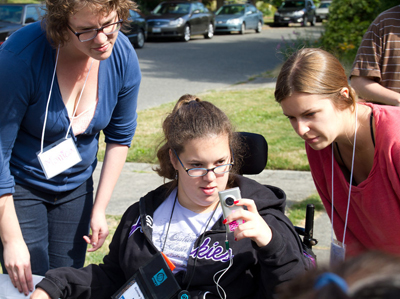
This summer three Phase II workshops were held 9 am-noon, Monday through Friday. All of the participants presented their findings at DO-IT Closing Ceremonies.
Scholars Jae, Macy, Sean, and Joshua participated in Disability and the Media led by Reel Grrls staff member Monica Olsson and supported by two DO-IT Interns Rosa and Russell. Held at Reel Grrls Studio in Seattle, participants learned the technology of production while beginning to focus on how individuals with disabilities are portrayed by today's media. The Scholars split into two groups to create video blogs. One blog focused on 'ableism' and the other used humor to get their perspective across on how to interact with people with disabilities. These videos are located at: www.vimeo.com/46775630 and www.vimeo.com/46775629
Neurobiology: Bugs, Mice and Brains! was conducted in the UW's neurobiology labs and was led by Dr. Martha Bosma, associate professor of biology. Scholars Kaylie, Deicy, Mauricio, and Vaughn investigated how nerves respond during their interactions. They recorded action potentials with cockroach legs and spontaneous activity with the embryonic mouse hindbrains. The experiments conducted in real labs were led by two graduate students Hiro and Julia and were supported by DO-IT Interns Tatusuro and Maximo.
The National Oceanic and Atmospheric Administration (NOAA) workshop, Responding to Natural Disasters, coordinated and led by Julie Peddy and Dr. Stephanie Moore, took place both on and off campus. NOAA scientists led presentations and experiments related to earthquakes, tsunamis, hurricanes, floods, oil spills, and global warming on the UW campus. Also, Scholars visited the Sandpoint NOAA labs in Seattle where they viewed the actual workspaces and equipment used by scientists to monitor the weather and environment. Scholars Cecily, Kim, Paige, and Diego were supported by DO-IT Interns Benjy, Niki, and Chris.
Ambassador Profile: Sean Marihugh
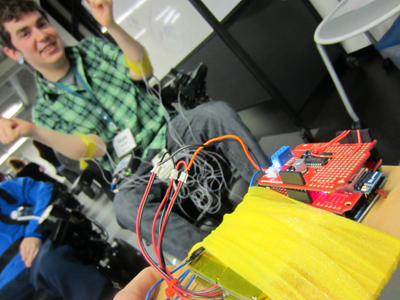
I'm Sean Marihugh, and I'm a DO-IT Ambassador. I was a Scholar in 2009, and have stayed active in the DO-IT community. Following my second Summer Study, I began my studies at the University of Washington, Seattle campus. Though I was initially interested in the computer science program, my focus shifted from computer programming to studying the interactions between users and technology. In order to stay true to my interests, I decided to pursue a bachelor's degree in psychology. I am currently a junior, and I am very excited to finish my formal education and enter the workplace!
For the last three years, I have worked at the DO-IT office, which has helped me become comfortable in a professional environment and has enhanced my interest in technology, usability, and accessibility. As a DO-IT Intern, I initiated and designed an interactive web page that lets students with disabilities track scholarships based on interests and types of disabilities. I also maintain a web page that lists upcoming events and opportunities for participants in the AccessSTEM program. I helped redesign the Information Technology and Disabilities e-journal using the current accessible web development guidelines. Last year, I began working with the Center for Neurotechnology's Student Leadership Council. My current project involves a remote-controlled car that drives based on electrical signals in the muscles.
I have Becker muscular dystrophy and use a power wheelchair to travel long distances, such as at work and on campus. Had I not been involved in the DO-IT program, I would not be where I am today. Prior to Summer Study, I planned on going to a small private university, since I felt my mobility impairment would limit me. After Phase I of Summer Study, I realized campus size should not be a deterrent. So, I decided to attend a very large campus, and I have been pleased with this choice and the opportunities it has provided. My interest in usability and the experiences I have had through DO-IT and my college career have given me a unique skillset that will allow me to improve technology for a wide variety of users.
DO-IT and Japan
What a trip! It is hard to know where to start in sharing with you my trip to Japan earlier in October, 2012. I was invited by our DO-IT Japan partners (yes, there is a DO-IT Japan program patterned after ours, see www.doit-japan.org). Dr. Takeo Kondo, a Tokyo University faculty member who, along with his family, spent a year (2010-2011) as a Visiting Scholar in the DO-IT program in Seattle, was my primary guide and even coordinated some sight seeing.
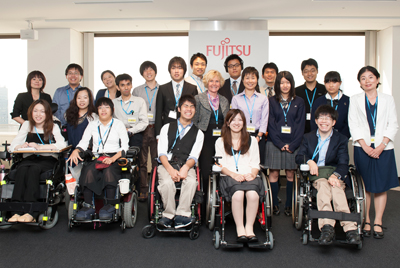
I gave a talk about access technology, universal design, and transition issues at the headquarters of DO-IT Japan's primary sponsor, Fujitsu, in Tokyo. Then I met with leaders of Fujitsu, which is the third largest IT company in the world, to learn more about their work and to share ideas regarding how more individuals with disabilities can be involved in the design and development of their products. I was joined by the DO-IT leader and Tokyo University professor Dr. Kenryu Nakamura. After that meeting I spent time engaging with DO-IT Japan Scholars. Takuya, a '93 DO-IT Scholar from the US that returned to Japan after attending the UW, is part of the group in a mentoring role. It was fun to see him.
After engaging with Fujitsu I had a chance to visit KidZania, a place for children to explore different careers in a Disneyland-type atmosphere. All of the buildings and places of "employment" are 2/3 the size so the children feel right at home. DO-IT Japan hosted an area for students with disabilities to test new software and is working with KidZania to make some of their interactive exhibits more accessible to students with disabilities. Dr. Mamoru Iwabuchi, a leader in DO-IT Japan and Visiting Scholar to DO-IT in Seattle area 2004-2005, conducted the technology sessions.
From Tokyo we took a train north to the large city of Sendai. There I spoke about transition issues and evidence-based practices in support of students with learning disabilities at a conference focused on learning disabilities. Over the last five years this area of interest has grown tremendously in Japan.
The next day I was honored to be escorted to the 2011 Tsunami area and witness the destruction there. Most of the rubble has been cleared away, some still visible in large piles, and there are miles of open space where there were once hotels, small towns, businesses, houses, and schools.
The last evening in Tokyo I was able to have dinner with Mamoru and Takeo and their families. What a fun treat at the end of the visit!
In summary, I spent an amazing week in Japan and came back energized by the enthusiasm of our collaborators in that country.
Scholarship Scams and Tips
When Scholarship Junkies visited DO-IT during Summer Study 2012, the topic of scholarship scams came up in our discussion of all things scholarships. What a great topic to discuss!
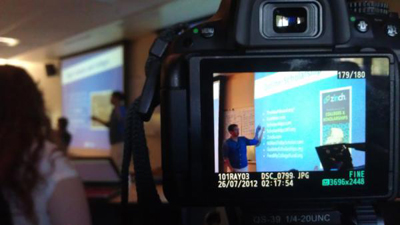
With so many students, parents, and families searching for scholarships, there are inevitably a small handful of people who want to exploit their needs by stealing personal information and money. It's important to understand how to identify "scholarship opportunities" that might actually be scams.
During the presentation, we discussed a few general rules of thumb:
- If a scholarship application asks for an "application fee" of any amount (it could be as little as $2 or as much as $25), skip it. No legitimate scholarship should be charging an application fee.
- If you're contacted out of the blue and awarded a scholarship for which you did not apply (or do not remember applying to), do not submit any personal information they request. You rarely win scholarships for not doing anything. Unless you applied for it directly or indirectly (e.g. through a scholarship application or as part of a college application), it's probably a scam.
- If a scholarship website you're using to find scholarship opportunities (we call these "scholarship clearinghouses") asks for sensitive personal information such as your Social Security number, a credit card number, or your mother's maiden name, do not use it. Scholarship clearinghouses should not be requesting this information.
Once you've found legitimate scholarship opportunities, the hard work is to make your application stand out competitively and personably. A scholarship is an organization's financial investment in their recipients' academic ability, potential to succeed, and best embody the organization's core values. Keeping this definition of scholarships in mind, it's important then for students to make themselves stand out. Here are a few ways to make an application stand out.
- Develop a strong track record. Track records can include academic achievements, community and extracurricular activities, or jobs/work responsibilities you might have. Why you did something is as important—if not more so—than what you did.
- Gather insightful support. If letters of recommendation and references are required, ask teachers, counselors, coaches, etc. who know you very well to write you strong letters of support. Their titles and positions are important, but even more important is their relationship to you. They have to be able to talk about you in more ways than just what's on your transcript or resume.
- Share your personal story. Essays are arguably the most critical component of a competitive scholarship application. It's your only chance to really make yourself stand out from all the other applicants that will also have grades, test scores, activities, and track records. Your essay is your voice. Do not be afraid to use "I" and to share your personal story.
In the same manner that I found ways to share about my neurological movement disorder in many of my essays, so too should you find ways to talk about the personal experiences that have shaped you. For me, growing up with dystonia forced me to mature faster than my friends. It required me to very responsible at a young age, but the medical treatment I received inspired me to use my "second chance" to achieve ambitious goals. My personal life story and experiences drive me to do what I do.
As you think about how to shape your application, think about the theme you want the judges to see clearly in all of your components. Is it a theme of leadership? Intellectual curiosity coupled with action? Perseverance in the face of any adversity? The ways in which you share your story and experiences dictate how others see you too.
Now, I completely empathize with students who shy away from writing. It's hard stuff! But practice makes perfect, and without all the mentors and teachers who so graciously provided me constructive criticism, I would never have experienced the scholarship success I did.
You have just as many—if not more—wonderful resources around you to help you through your scholarship journey. The DO-IT program, Scholarship Junkies, and your educational environment are just some of these. Never be afraid to ask for help. It takes courage to ask for help, but if you do, I guarantee you will be better off for it.
Scholarship Junkies pledges to be there with you every step of the way. Our team of dedicated volunteers and mentors who genuinely care about your success are willing to work with you as you craft, write, and edit your scholarship essays. We instituted a three-draft policy on any given scholarship essay, so we can serve as many students possible. But the key is that you have free help waiting to work with you.
In closing, I hope you'll pursue your scholarship journey rigorously and ambitiously. The news around us tells us that college tuition is skyrocketing and that student debt is exploding exponentially. There's no doubt they are, but thankfully, there are opportunities like scholarships to help ease the costs of obtaining a college degree—and organizations like Scholarship Junkies ready to work with you to meet your goals.
If you're concerned or have questions, you are welcome to email our Scholarship Junkies team at secrets@scholarshipjunkies.com
Samson Lim is the Founder and Executive Director of Scholarship Junkies, LLC. Driven by his experiences of applying for over 75 scholarships and winning 18, Sam founded the Seattle-based scholarship resource program to connect scholarship applicants with recent scholarship recipients in an effort to help students find ways to afford higher education. Every year since 2008, Scholarship Junkies has facilitated a scholarship workshop at DO-IT's Summer Study.
Finding a Hidden Intruder On Your Hard Drive
In recent years, DO-IT Scholars have brought in computers exhibiting strange symptoms. When we used traditional tools to scan for virus or malware infection, only a few minor issues were found and removed, but the issues were not resolved and the odd computer behavior persisted.
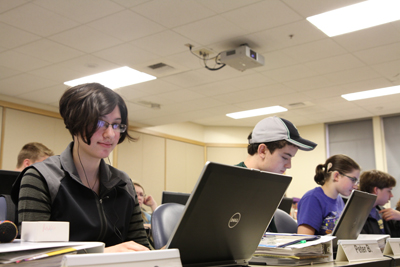
What we found lurking in the computers were root kit intrusions, which are a collection of programs that break through vulnerabilities in your computer's hard drive. A root kit intrusion creates a directory that is hidden from the view of the user and the operating system. Inside is the harmful payload that can be triggered to open and load into memory when the computer boots up, leaving the computer process to run amok again and again despite the best efforts to clean the system. If the operating system cannot see the directory, the virus scanning software doesn't know to look there either.
A couple of free tools for the newer versions of the Microsoft Windows Operating systems are Microsoft's Security Essentials and TDSSkiller by the anti-virus company Kaspersky. The later can be downloaded from www.bleepingcomputer.com/download/tdsskiller. As for Microsoft Security Essentials, it clashes with the latest version of Sophos antivirus we currently use on Scholar machines so it is best not to install both on the same computer.
As always, it is best to be proactive and practice safe computing activities rather than struggle to restore a machine that has become infected.
The Thread: Preparing For College
I wanted to share with you a question posed by a DO-IT Ambassador in our Internet discussion forum and some of the responses so that you can get the flavor of the many rich conversations the DO-IT community has online. Some forum posts are edited for clarity and brevity.
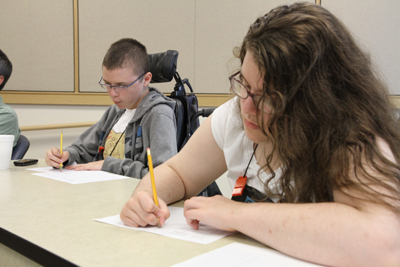
One aspect of having a disability and going to college I hadn't thought about was the massive amount of work and organizing that needs to get done before you actually go to college. So far I've spent heaps of time working with counselors, checking class waitlists, organizing my dorm situation, and ensuring I get the accommodations I need from the disability office. If I could do this whole process again, I would have started preparing as early as possible, because towards the end of the summer a lot of the resources are already taken and university staff get busy and have less time to help you.
DO-IT Ambassador: I think what you are saying is really true. There is a lot of work and organizing before you go to college, and there is also a lot of ongoing work after you get there just to keep receiving the same services. Sometimes it feels like starting over again every quarter. It can seem like the paperwork and meetings and information sessions never end. For me this is stressful. I have some tips, though.
- In high school, make a folder of all your paperwork including your final Individualized Education Program documents, evaluations, transcripts, PSAT/SAT/ACT scores, nice photos of yourself, a resume, and a list of every single activity you do. Take it to all college disability office meetings. Also include copies of every college application and disability office application. To be prepared, I keep two copies of everything in my folder for meetings.
- Ask your high school and any colleges to mail official copies of your transcript to your home in a sealed envelope. That way if you ever need them in a meeting (or on a Friday night when you are mailing in applications), they are handy. Some people want them directly from the school but others such as some scholarships are okay as long as the envelopes are sealed and signed. You can also scan one of them and send the file to those who accept an unofficial copy.
- Even if the disability office only wants official forms, include a cover letter. In the cover letter, note who you are and what things you want and need in order to learn and why. Mail it to them or staple it to the application you fill out on campus. Don't be limited by forms. It is important to explain how your disability impacts your learning and, most important, what you do to overcome it. Translating your disability for your professors and the disability office really helps them. You can also attach a letter from a doctor explaining or recommending anything beyond what is included on the forms.
- Introduce yourself to professors via email. I use a similar email for every professor every quarter, so it's not much work after you've done it the first time. I tell them about my autism and ask if I can meet them before the quarter starts.
- When I meet with the new professor, I take a copy of a letter from me (which is the same thing from my email plus a little more detail) and give it to them. We talk about it. I ask them if they have any questions for me. I also let them know that they will receive an official email from the disability services office soon. This usually happens the next day if I get my timing right. I have learned that even after the initial meeting and the official email, I need to return for yet another meeting to officially request the accommodations from the professor. There is a certain order in to how you have to ask.
- Meet every deadline. Being early is better because as noted in the original post, the disability services office gets very busy, especially with people who procrastinate.
- I think that relationships are important. Make a friend in the disability services office at the colleges you might want to go to. Meet them in person and get their business card so you know their phone number, address, and email. Send a thank you note after the first meeting. Keep them informed about how your application is going or ask them a question. I found out at one school that sometimes the person there has flexibility to recommend a special placement test you should take instead of the standard one. If you are going to need ongoing accommodations to be successful and you do not get along with the people in the disability services office, I would think twice about going to that college.
- Relationships help with scholarships too. I sent a letter to the scholarship person at each college telling them about my disability and explaining ahead of time even before I took the ACT that I knew there would be a difference between my grades and my standardized test scores. Schools decide on scholarships based on both, but I wanted them to give me more credit for the grades, including Running Start (which proved I could handle college work). When I wrote the letter I tried to put myself in their shoes and think about how they could use it to advocate for me in a meeting, so I put in sound bites or phrases. One lady called and thanked me for the letter because she had just come from a scholarship committee meeting, and she had my letter with her there, and it had made her feel really prepared to support me. She was able to just read from it to convince the group about giving me a scholarship!It was sort-of a script in my own words about why my test scores weren't as high as most people's due to my disability. They offered me a great scholarship.
- The disability services office rules lots of things you wouldn't think about. I don't know how things work at other schools, but I learned that the disability office is in charge of your dorm accommodations if you originally requested something through them such as a private room. When I went to the housing office and asked to move out of the dorm because of the noise, the first thing the housing person asked was if I had gone to the disability services office. I had not thought of going there first, and it wasn't documented on their website as part of the process, and it caused a delay, but the housing people needed to hear from them directly before they would talk to me. Fortunately, I had a good relationship with the disability services office and they supported my request to change. As soon as they said to do it, the housing office did it instantly.
- Be ahead of the system. One great thing my university offers for students with disabilities is early registration. For me this has been a mess because even though I am always ready to sign up on the date they tell me to, most of my courses (for music majors) are not available to all students, so I need a permission code to register. But the school never seems to send out permission codes to faculty in time for early registration. So I am always going around to the professors, sometimes for courses I haven't taken yet so they don't even know me, and begging them for codes to get into their class. I try to make this an opportunity to introduce myself and give them my own personal disability letter. I have also learned that sometimes not even the registrar's office is ready for early-registering students, such as for winter quarter last year I was the very first person at the whole university to login and try to register. So, even though you have to do everything by the rules, sometimes the people on the other side aren't ready to follow their rules. But don't give up.
- For your scholarship file, make a spreadsheet of your most important activities such as clubs or projects and how much time you spend on them. I have one that's divided between volunteering and other things like music lessons and performances. I also divide it between things at my school and outside of school because some applications want it split. I try to sit down once or twice every month and update it.
- One final thing I have learned in college is that when you are really positive, proactive, and honest about yourself and show a strong desire to learn, sometimes instructors will accommodate you even without going through the disability services office. This is not the normal thing and I don't recommend it but I have had it happen to me. If they understand that you are not asking for anything unfair to other students, they might make up their own mind that you are being reasonable. I have also had teachers go way beyond what is officially required and offer things that help me relax, such as letting me do individual projects instead of group ones even when my accommodations don't require it. If they see you trying, and they know you care more about learning than just about grades, they like that! Good luck to everyone in college!
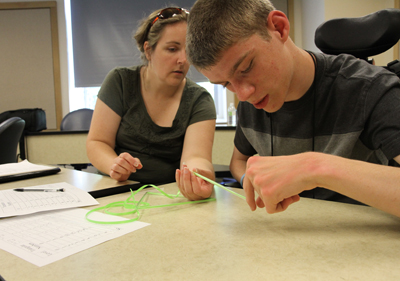
DO-IT Ambassador: I agree with the previous poster. I have used most of these tips as well such as emailing professors, having a filing system, arranging meetings with professors, etc. I will have to try the cover letter idea for disability services for grad school since I really like that idea. Dorm issues aren't there for me but registration is. Go see your adviser at least a month early to get your classes arranged. At my school you need documentation for all of the disability services or official school changes so ask them specifically what they need for disability services, scholarships, etc. I needed to do this with my hardship withdrawal and tuition forfeiture. I really do emphasize connecting with real people, which is hard with a system but do it anyway. I often use school officials for job references. Be patient and always check on all correspondence.
DO-IT Mentor: I always have found it handy to visit campus (before the first day of campus) to locate classrooms. This always made me feel more comfortable the first few days of the term!
DO-IT Ambassador: Always talk to your professors. If you feel the need, set up a weekly meeting to discuss assignments and how you feel about the class activities and what you might be struggling with.
DO-IT Ambassador: Buy spare printer ink so you won't run out at 11 p.m.
DO-IT Ambassador: Use a detailed schedule of things to do. Color code it if you it helps. You think you'd remember things in your head, but you really don't.
How Can You DO-IT?
- Sign up to receive DO-IT News if this newsletter was not mailed directly to you.
- Volunteer as a Mentor or to help with one of our Summer Study programs.
- Pass this newsletter on to someone you know who can benefit from our programs.
- Donate money to support and extend DO-IT activities including sponsoring Scholars from states outside of Washington, special events, work-based learning experiences, participant attendant or travel costs, refreshments for program participants, and creation and distribution of educational videotapes and publications.
DO-IT today by completing the form below! You may also make a secure online credit card donation at the University of Washington Make a Gift page by selecting the "DO-IT Program Gift Fund" option.
___ Sign me up to receive copies of DO-IT News, a free program newsletter.
___ Send me more information about DO-IT volunteer opportunities.
___ I would like to make a donation (payable to the University of Washington, Federal ID#91-6001537) to support DO-IT operations.
___ I have enclosed a check for $____________
___ Please charge $____________ to my credit card.
___ VISA ___ Mastercard
Date _____________
Card Number __________________________ Expiration Date _____________
Card Holder Name ___________________________________________________
Signature _____________________________________________________
Address ____________________________________________________________
City __________________________ State _____________ Zip ____________
Phone: Home __________________________ Business ____________________
E-mail: ____________________________________________________________
Your gift is tax-deductible as specified in IRS regulations. Pursuant to RCW 19.09, the University of Washington is registered as a charitable organization with the Secretary of State, State of Washington. For more information, call the Office of the Secretary of State, 1-800-322-4483.
Mail to:
DO-IT
University of Washington
Box 354842
Seattle, WA 98195-4842
Thank you!
More About DO-IT
DO-IT News is published at the University of Washington with input from DO-IT staff, Pals, Scholars, Ambassadors, and Mentors. DO-IT is primarily funded by the National Science Foundation, the U.S. Department of Education, and the State of Washington.
DO-IT (Disabilities, Opportunities, Internetworking, and Technology) serves to increase the successful participation of individuals with disabilities in challenging academic programs such as those in science, engineering, mathematics, and technology. Primary funding for DO-IT is provided by the National Science Foundation, the State of Washington, and the U.S. Department of Education. DO-IT is a collaboration of UW Information Technology and the Colleges of Engineering and Education at the University of Washington.
Grants and gifts fund DO-IT publications, videos, and programs to support the academic and career success of people with disabilities. Contribute today by sending a check to DO-IT, Box 354842, University of Washington, Seattle, WA 98195-4842.
Your gift is tax deductible as specified in IRS regulations. Pursuant to RCW 19.09, the University of Washington is registered as a charitable organization with the Secretary of State, state of Washington. For more information call the Office of the Secretary of State, 1-800-322-4483.
To order free publications or newsletters use the DO-IT Publications Order Form; to order videos and training materials use the Videos, Books and Comprehensive Training Materials Order Form.
For further information, to be placed on the DO-IT mailing list, request materials in an alternate format, or to make comments or suggestions about DO-IT publications or web pages contact:
DO-IT
University of Washington
Box 354842
Seattle, WA 98195-4842
doit@uw.edu
www.uw.edu/doit
206-685-DOIT (3648) (voice/TTY)
888-972-DOIT (3648) (voice/TTY)
206-221-4171 (fax)
509-328-9331 (voice/TTY)
Spokane Founder and Director: Sheryl Burgstahler, Ph.D.